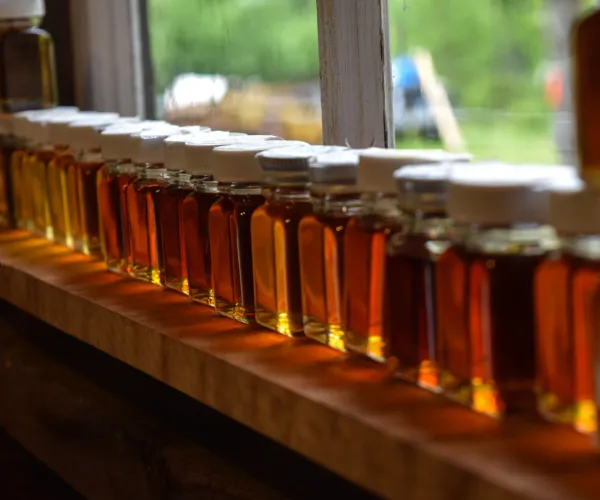Maple Business Economic Viability
This chart shows the distribution of maple businesses by self-reported economic status: 15% are economically vulnerable, 60% are sustaining operations, and 25% report being fully economically viable.
Key Insights
The Majority of Maple Businesses Are Maintaining Operations, But Not Thriving
While 60% of maple businesses report being "sustainable," only 25% consider themselves fully "economically viable," suggesting that most operations are stable but may lack sufficient profitability, growth potential, or long-term financial resilience.A Notable Portion of Maple Enterprises Remain Economically At Risk
With 15% of businesses categorized as "vulnerable," a significant minority of producers face economic instability—highlighting the need for targeted support, risk mitigation strategies, and policy interventions to safeguard these operations and the communities they support.
Exchange Rates
With significant cross-border trade between the U.S. and Canada, exchange rates play a crucial role in the maple industry. This section provides ongoing monitoring and analysis of CAD-USD exchange rate trends and their influence on pricing, competitiveness, and market dynamics for maple syrup producers and exporters.
CAD-USD Exchange Rate
Key Insights
The Canadian Dollar Weakened Significantly in Early 2025, Increasing U.S. Buying Power
From January to April 2025, the CAD-USD exchange rate rose from 1.4527 in January to a high of 1.3799 in April, marking a 4.9% decline in the value of the Canadian dollar relative to the U.S. dollar. This depreciation makes Canadian maple syrup exports relatively cheaper for U.S. buyers, potentially increasing demand for Canadian bulk syrup and creating price competitiveness pressures for U.S. producers.Exchange Rate Volatility Can Influence Market Stability
The exchange rate experienced multiple swings of over ±2% within several months (e.g., a 3.02% rise in October 2024, followed by a 2.28% drop in August 2024, and a 4.09% drop in April 2025). Such volatility introduces uncertainty in cross-border transactions and contracts, particularly in bulk syrup sales, which may be priced in either currency. This reinforces the need for maple producers and buyers to monitor currency trends and consider exchange rate risk in long-term pricing strategies.
Understanding the Economic Backbone of the Maple Industry
The Economics Dimension of the Maple Sustainability Indicators Initiative provides a comprehensive look into the financial realities and market dynamics of the maple syrup industry. By analyzing data across multiple levels—from bulk and retail price trends to exchange rate fluctuations and inflation-adjusted values—this section offers insights into how economic conditions shape both short-term decision-making and long-term resilience for maple producers. It examines the balance between input costs and returns, the structure of domestic and international trade, and how these factors collectively influence the sustainability of maple businesses. Special attention is given to how pricing systems and macroeconomic variables like the CAD-USD exchange rate interact with maple production and marketing strategies across the U.S. and Canada.
Beyond enterprise-level financial metrics, this dimension also explores the industry’s broader role in supporting rural economies through land ownership, labor contributions, and access to capital. Data on business typologies and viability help illuminate who is participating in the maple sector and under what conditions they succeed or struggle. Community-level indicators—such as land tenure patterns and labor inputs—highlight the role maple production plays in rural livelihoods, generational succession, and forest stewardship. Together, the indicators in this dimension create a clearer picture of the economic landscape that underpins sustainability in the maple sector, offering actionable insights for producers, researchers, policymakers, and community partners.
